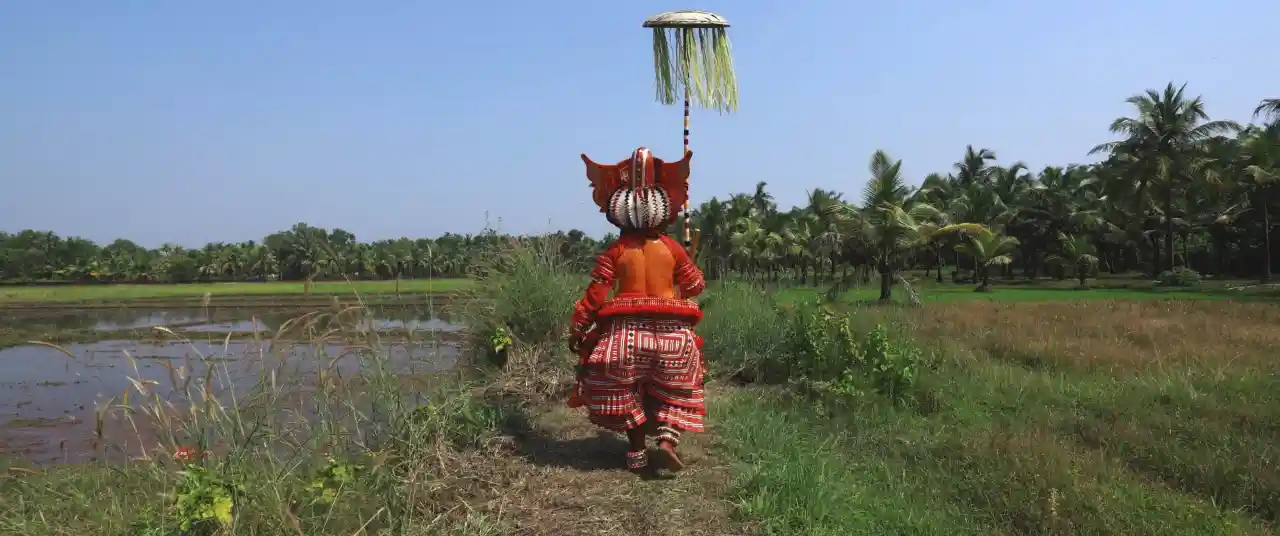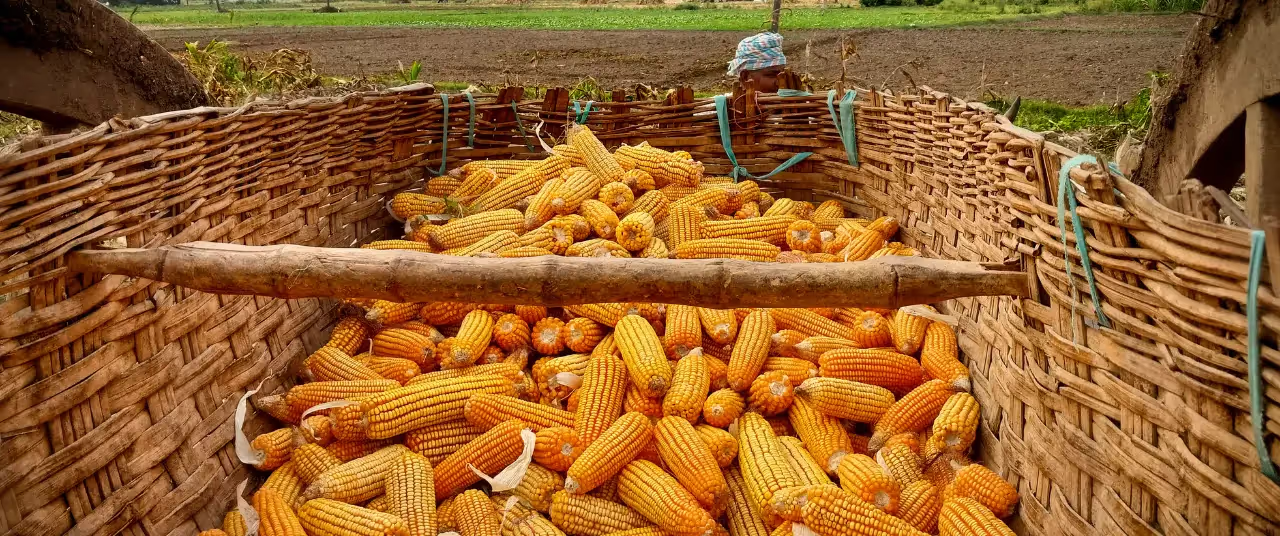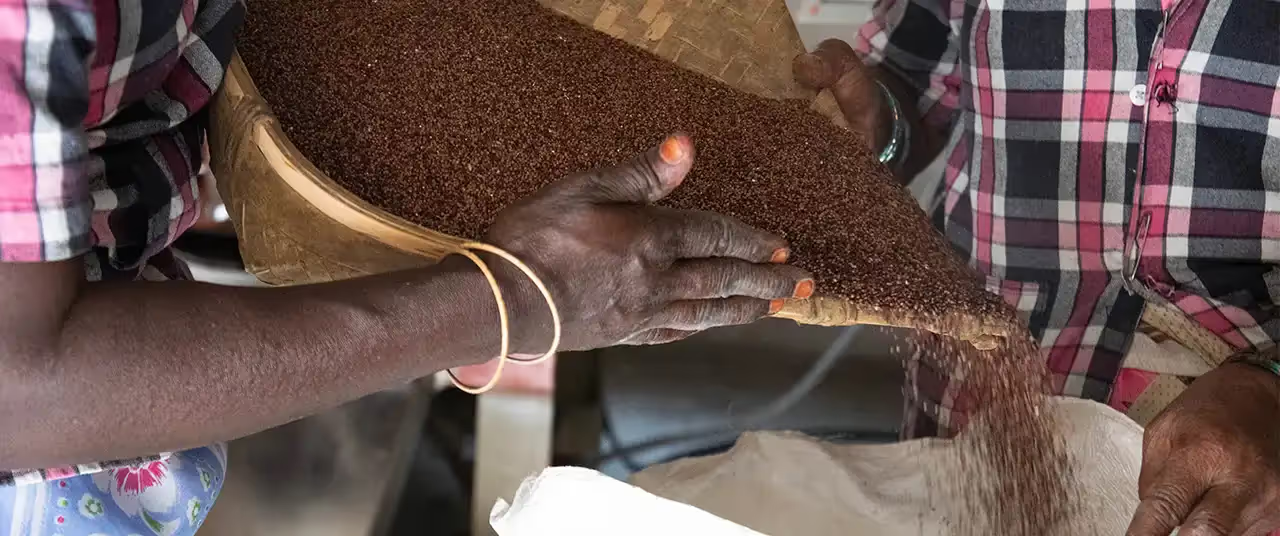Ragi is a hardy crop that requires less water, but it still needs specific conditions, such as the right soil and timely rain, to grow well. During the harvest, farmers face difficulties with dust and pollution. The dust from the fields can cause respiratory problems and irritation to the eyes and skin. They often work early in the morning or late in the evening to avoid the worst dust and pollution. Many use simple protective gear, like masks and clothes, to cover their faces and minimize dust inhalation.
Threshing is not just about the labor, but the soul of rural life, preserving the enduring spirit of those who work the fields with dedication and pride.
Ragi, or finger millet, is a nutritious and resilient crop that plays an important role in rural India, especially in Karnataka, where it is widely grown due to its ability to thrive in dry climates.
The harvesting season for ragi starts after the monsoon when the plants are fully matured. It's more than just separating grains from husks.
It's a tradition passed down through generations, preserving both culture and livelihood. The entire process requires intensive manual labor.
Threshing is a communal activity filled with songs and laughter. Traditionally, people manually beat dried ragi bundles against a hard surface like a wooden plank or stone slab to loosen the grains from the stalks and remove the husk.
Throughout the day, men and women work together, skillfully coordinating their movements to separate the grains efficiently.
In some villages, a bullock-drawn stone roller, called a "thresher," is used to break open the husks and release the grains. Despite modern machinery, many farmers still prefer these traditional methods for threshing ragi because they are more cost-effective and cause less damage to the grains.
After threshing, the next step is winnowing, where the lighter chaff is separated from the heavier grains by tossing the threshed material into the air with a woven basket or tray.
The ragi grains are then collected, sun-dried to remove any remaining moisture, and stored in large jute sacks or earthen pots to protect them from pests. This entire process, from harvesting to storage, showcases the skill and endurance of the farmers.
Threshing ragi is more than an agricultural task; it's a celebration of community, resilience, and tradition.
Even as modern agricultural practices evolve, these traditional methods remain an essential part of rural India, linking current generations to their ancestors and the land they farm.
You might also like
See all
























